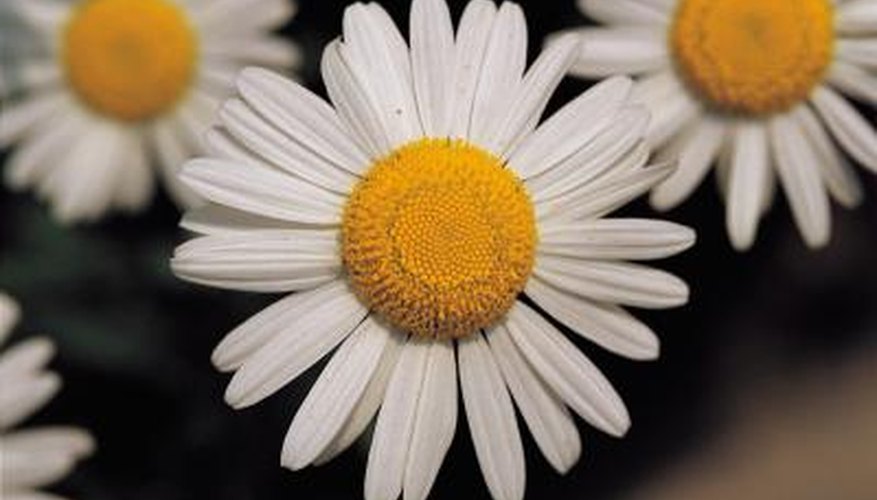Shasta daisies provide a whimsical feel to any yard or garden. These flowers are often found in many home landscape designs and are perennials. Shasta daisies are susceptible to a few damaging diseases such as powdery mildew and a few insects can feed on the petals of the plant. Aphids and caterpillars are two common pests of Shasta daisies that affect its health and appearance.
Types
Caterpillars feed on Shasta daisy petals, stems and leaves. These pests begin feeding on host plants while young, but are not capable of extensive damage until they grow larger. Larvae cause leaves to appear skeletonised or have a lacy appearance. As they mature, caterpillars feed on the entire leaf and petals, even consuming the tough leaf veins. Aphids are another common pest of Shasta daisies. These tiny insects feed on the tender shoots and leaves with sucking mouthparts. Aphids are very small, pear-shaped insects that overwinter as eggs and hatch in the spring months. Some aphids are wingless.
- Caterpillars feed on Shasta daisy petals, stems and leaves.
- As they mature, caterpillars feed on the entire leaf and petals, even consuming the tough leaf veins.
Effects
Caterpillars cause Shasta daisies to have a ragged or chewed appearance. Petals of this flower might appear chewed or sawed-off and the stems might be cut. The leaves will have holes in them or the leaf margins are ragged. Aphid infestations can cause Shasta daisies to have distorted leaves, stems and flowers. Daisies with heavy infestations of aphids may develop a coating of fungus that causes it to become unsightly, which is a result of honeydew production. Honeydew is produced by aphids after ingesting large amounts of plant sap. This substance sticks to daisy petals and leaves, causing a black coating of fungi known as sooty mould to develop.
- Caterpillars cause Shasta daisies to have a ragged or chewed appearance.
- Daisies with heavy infestations of aphids may develop a coating of fungus that causes it to become unsightly, which is a result of honeydew production.
Cultural Control
Inspect your Shasta daisies frequently for signs of caterpillar infestations. Ragged leaves or chewed petals are signs of caterpillar feeding. Remove caterpillars by hand and place them in a bucket of soapy water to kill them. This is best accomplished during the early morning when caterpillars are sluggish and move slowly. Aphids can be controlled by spraying your daisies with a brisk stream of water twice weekly. This knocks aphids from the plant and keeps their populations under control. Light aphid infestations can be removed with an alcohol soaked cotton ball, placed on the back of the insect. Wipe the aphids away and throw the cotton ball away.
- Inspect your Shasta daisies frequently for signs of caterpillar infestations.
- Remove caterpillars by hand and place them in a bucket of soapy water to kill them.
Chemical Control
Insecticidal sprays labelled for caterpillar control are available at your local garden centre and can help reduce heavy caterpillar infestations if they are severe. However, most caterpillar infestations can be controlled by removing them from your plants by hand. Insecticidal soaps and horticultural oils are two contact insecticidal products that can kill aphids and keep them under control. You must be sure to completely cover your daisies with these products for best results. Test insecticidal soap and horticultural oil products on a small portion of your plant before applying it all over. If no damage occurs within seven days, it is safe to apply to your entire plant.
- Insecticidal sprays labelled for caterpillar control are available at your local garden centre and can help reduce heavy caterpillar infestations if they are severe.
- However, most caterpillar infestations can be controlled by removing them from your plants by hand.
